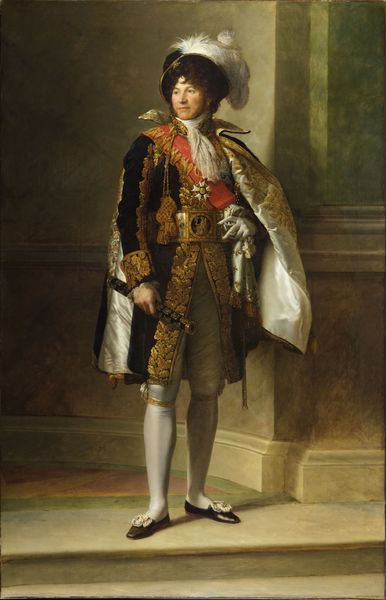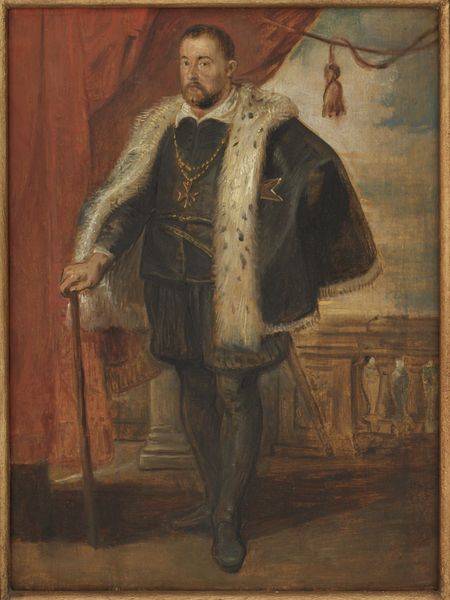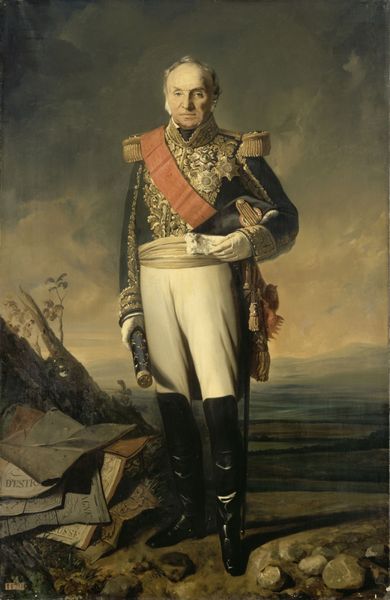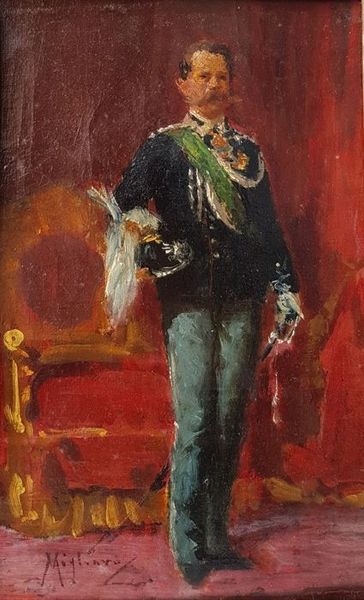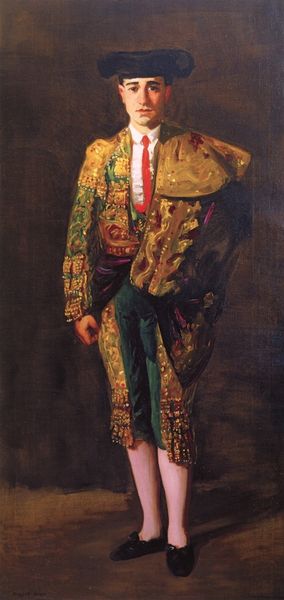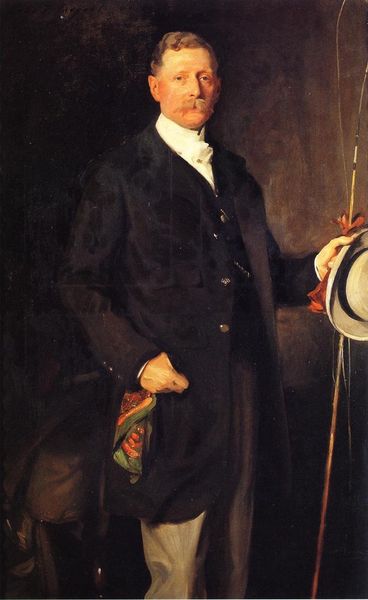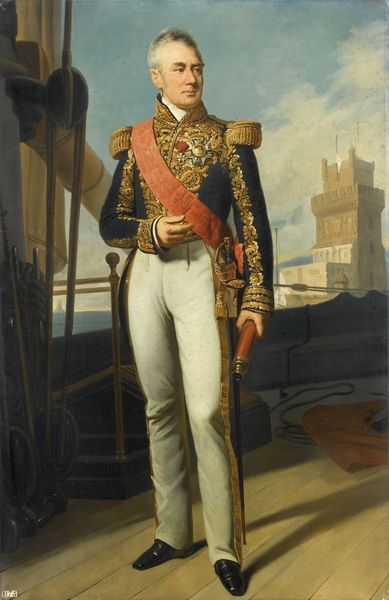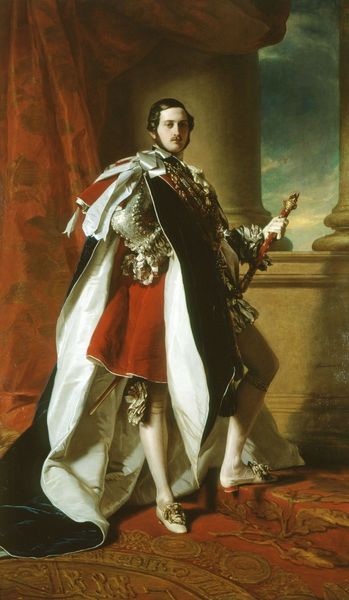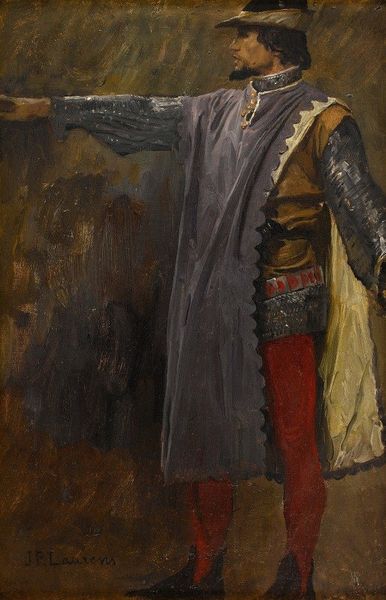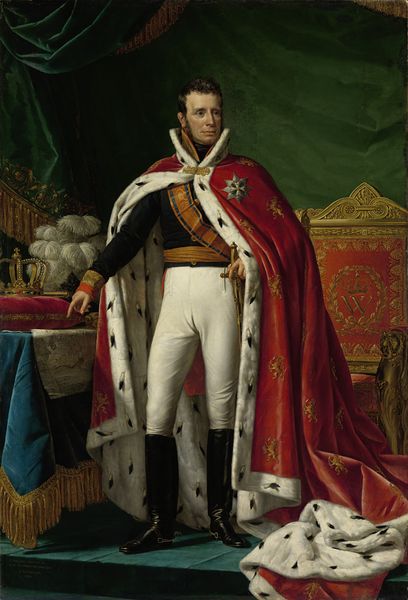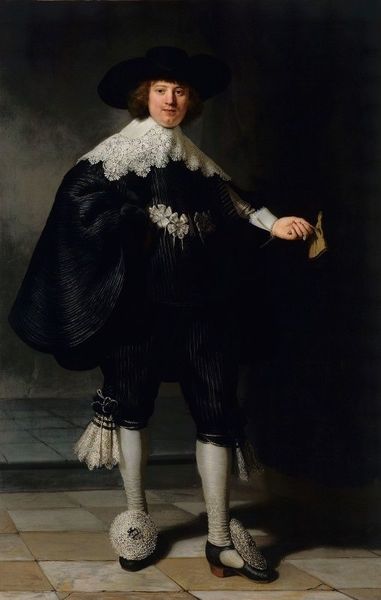
Dimensions: overall: 195.6 x 124.4 cm (77 x 49 in.) framed: 221.6 x 150.2 cm (87 1/4 x 59 1/8 in.)
Copyright: National Gallery of Art: CC0 1.0
Editor: This is Ignacio Zuloaga’s "Achieta," painted between 1911 and 1913, using oil paints. It’s a striking portrait of a bullfighter, but what’s particularly fascinating to me is the almost tangible weight and texture of his gold-embroidered costume against the muted cityscape and crowd below. What jumps out at you in this painting? Curator: Immediately, my focus goes to the elaborate craftsmanship evident in the bullfighter's attire. Consider the labour involved: the mining of precious metals, the spinning and dying of threads, the highly skilled embroidery. These materials speak to a complex economy of production and consumption, intimately tied to the spectacle of bullfighting. How does Zuloaga elevate this from mere representation to an interrogation of social practices? Editor: So, it’s not just about depicting a bullfighter but about showing the labor and economic structure that supports that world? I hadn’t thought about it that way. Curator: Exactly. And notice the contrast. Below him, the blurred figures of the crowd and the simplified rendition of the cityscape point to an industrialized workforce. Zuloaga positions Achieta as both performer and product, highlighting the materials that define his very being as an idol. What is he actually *selling* to the public? And by extension, what is the crowd willing to *buy* from him? Editor: I guess I always looked at paintings like this for the artistry, not the actual physical making. Curator: The act of painting itself is a material process, is it not? Zuloaga isn’t just creating an image; he’s engaging with a historical and economic reality, mediated by paint, canvas, and the cultural context of bullfighting as both art and industry. The romantic notion of a heroic figure must contend with the very real materials that construct that image, that myth. Editor: That gives me a completely new perspective. I’ll never look at a portrait the same way again. It's like each element tells a story of labour, materials, and social power. Curator: Precisely! Seeing art through a materialist lens reveals how deeply entwined artistic representation is with the world of production, labor, and social structures. We are now viewing that interplay!
Comments
No comments
Be the first to comment and join the conversation on the ultimate creative platform.

